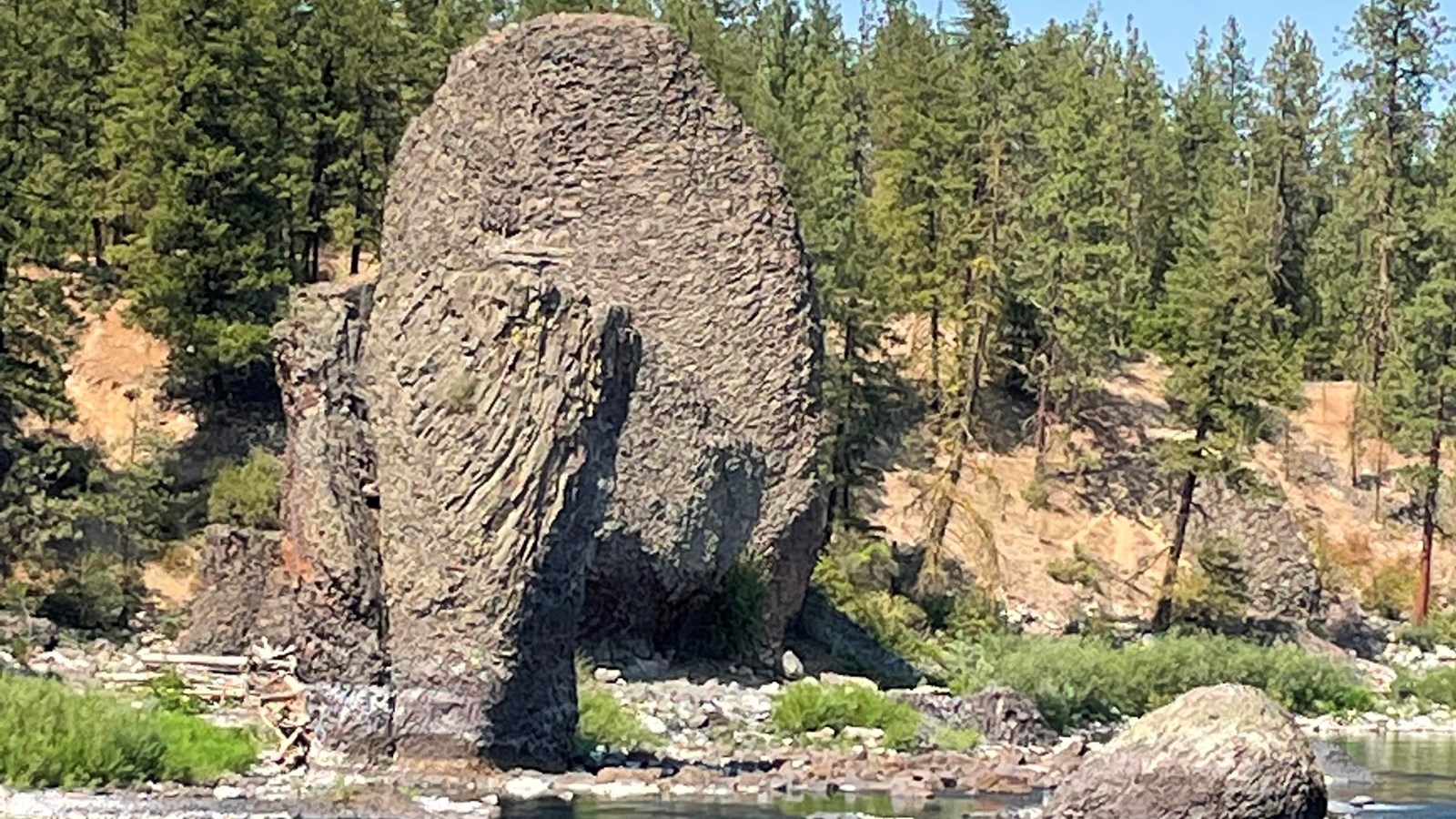Last updated: February 9, 2023
Place
Bowl and Pitcher (Riverside State Park)

NPS Justin Radford
Accessible Rooms, Entrance Passes for Sale, First Aid/Medical Care Available, Historical/Interpretive Information/Exhibits, Information, Parking - Auto, Pets Allowed, Picnic Shelter/Pavilion, Picnic Table, Restroom, Scenic View/Photo Spot, Water - Drinking/Potable, Water - Hookup - Boat/RV
What forces carved the Bowl and Pitcher and why did these rocks end up in the river? To answer these questions we must know what types of rock make up this area. The dark rocks here are Columbia River Basalt (CRB) lava flows. These rocks are part of the Grande Ronde Basalt, one of the most voluminous of the CRB eruptions.
Sandwiched between the layers of lava is the Latah Formation, a sedimentary unit made of clay, silt, and sand. Unlike the sedimentary formations of western Washington, which are almost all marine in origin, the Latah rocks were deposited in a huge lake. This lake formed when the CRB lava flows descended on eastern Washington and blocked off rivers that already flowed through the area. Large amounts of sediment were deposited into this lake. When new lava flows arrived, they cooled quickly on contact with the water. We see this in the steep cliffs at the Bowl and Pitcher area, on the western side of the Spokane River. The cliffs expose rounded pillow lavas surrounded by palagonite, which is altered volcanic glass. Both pillow lavas and palagonite are types of rock that form when hot lava is exposed to cold water.
When the ice age floods surged over the Columbia Basin, they eroded away the rocks in the Bowl and Pitcher area. The Latah Formation was much easier to erode than the Grande Ronde lavas, so it was broken down and removed first. With their support gone, the basalt rocks on top of the Latah layer became unstable and tumbled down into the river channel. The basalt rocks tend to weather into rounded, bulbous masses like those seen at the Bowl and Pitcher. These shapes result from the curved joints that form in the lava as it cools.
